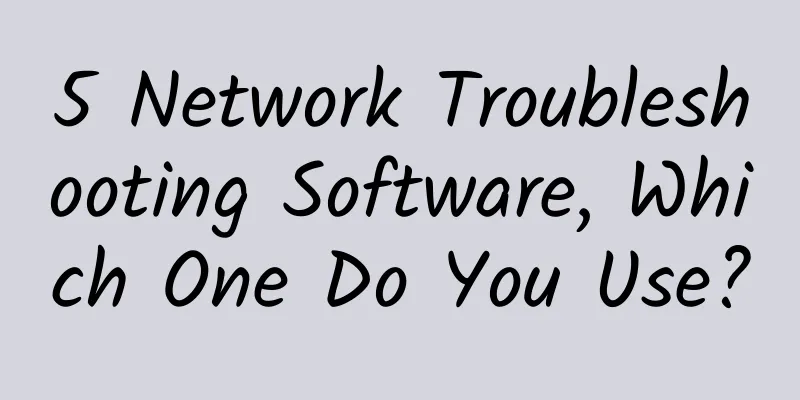7 key SD-WAN trends to watch in 2021

|
As SD-WAN technology continues to mature in 2021, expect more improvements in the technology’s support for integrated remote access, automation, and multi-cloud connectivity. Software-defined WAN remains a key technology for enhancing the user experience (UX), improving security, and providing connectivity to cloud-based applications. As SD-WAN matures, its application scope is also expanding to provide options for remote access, support IoT connections, link to secure access service edge (SASE) architecture, and provide SD-branch capabilities. Its ability to link with industry-leading IaaS and SaaS applications, as well as overall management and orchestration capabilities (especially cloud-based intelligence and automation, easy installation and problem solving) continues to improve.
SD-WAN Developments in 2020SD-WAN market revenue continued to grow in 2020, but its revenue growth is slowing due to the impact of the coronavirus epidemic. Some organizations have slowed down the pace of IT investment, especially when not many employees are currently working in branch offices in the office. Many branch offices are in vertical industries that have been severely affected by the epidemic, including hotels, travel, retail and restaurants. This will also affect some organizations' plans to adopt SD-WAN to upgrade branch IT. The SD-WAN market continued to consolidate in 2020, with examples such as HPE’s acquisition of Silver Peak and Palo Alto Network’s acquisition of CloudGenix. Now in the market expansion phase, large network, IT, and security vendors provide the vast majority of SD-WAN technology. SD-WAN trends to watch in 2021Here are seven key areas of SD-WAN development that enterprise network teams should focus on in 2021: (1) Integrated remote access is now requiredThe 2020 pandemic has shown that most remote workers can work efficiently from home. Looking ahead, Doyle Research predicts that tens of millions of workers around the world will work remotely at least half of the week to eliminate commuting time, better arrange working hours or complete work. Many IT organizations are now prioritizing providing streamlined, secure access to these employees. Current VPN technologies are not a good long-term strategy. IT organizations are looking for remote connectivity options that are integrated with continuous security, such as SASE architectures. SD-WAN offers comprehensive technology that addresses the challenges of reliability, latency, and performance in home offices. It also provides protection against malware and phishing attacks that could lead to the loss of sensitive data. Many SD-WAN providers have integrated zero-trust network access (ZTNA) to further enhance their remote access capabilities. (2) SD-WAN is SASE compliantThe term SASE, which indicates the convergence of network and security functions in the cloud, has become all the rage in 2020. Dozens of network and security vendors, including most of the major SD-WAN vendors, now claim to offer SASE capabilities. At this point, SASE is more of a future architecture than a product, and most existing products have some shortcomings in some aspects of the SASE feature list. Most IT and security organizations continue to rely on their existing layered security product strategy, for example, next-generation firewalls, application delivery controllers, secure web gateways, cloud access security brokers (CASBs), identity, security information, and event management (SIEM) and ZTNA, which provide protection for networks, applications, and data. In 2021, SD-WAN vendors will continue to enhance and expand their network security offerings, including remote access, ZTNA, CASB, and SIEM capabilities. They will also improve the ability to set unified security policies across remote connections, branches, LAN, and WAN access. These products are likely to add to installed network security policies rather than replace them, especially in larger organizations. (3) Growth of SD branchesSD-Branch simplifies network operations by consolidating WAN connectivity (i.e. SD-WAN and routing) with network security and LAN/Wi-Fi in a unified platform that is easy to deploy and manage. Some SD-WAN vendors have been aggressive in their SD-branch investments, including HPE Aruba and Fortinet, but others have taken a wait-and-see approach. As SD-WAN vendors continue to innovate their platforms, they will increasingly add SD-branch capabilities to their offerings. SD-branch makes significant economic sense as an all-in-one option for branch operations. Doyle Research expects the SD-branch market to grow from hundreds of millions of dollars in 2021 to billions of dollars in 2025. (4) 5G becomes a viable SD-WAN link5G cellular networks now offer connection speeds on par with many broadband internet services. They are easy to provision and enable rapid expansion of new branch locations. In 2021, more organizations will look to 5G as one of their SD-WAN connections for backup and reliability. As 5G competition intensifies, the cost of unlimited data plans will drop, making 5G WAN connections more attractive. (5) Automation and artificial intelligence make a deep impressionSD-WAN vendors have been talking about how artificial intelligence and machine learning will automate their networks, but the actual implementation has been disappointing. During 2021, vendors will begin to deliver on their promises to improve automation for their SD-WAN products and services. Their goal is to provide a unified platform for centralized control of security policies, quality of service, applications, users, and devices; enable IT operators to ensure quality of service (QoS) on an end-to-end basis; and quickly identify and correct application slowdowns. (6) Improved multi-cloud connectivityAs more applications move to IaaS and SaaS platforms, enterprises must provide simplified Internet access from the branch to specific cloud-based services. SD-WAN providers have partnered with industry-leading IaaS providers and some SaaS platforms (such as Microsoft 365) to simplify access and accelerate connections. In 2021, SD-WAN providers will continue to strengthen their cloud partnerships by providing more granular access controls and improving QoS reliability. As IaaS providers establish local service points in their edge computing strategies, SD-WAN vendors will provide traffic management to ensure that traffic flows to the best network service provisioning point (PoP) to ensure consistent QoS. (7) Growth of managed servicesThe first wave of SD-WAN adoption was driven by industry-leading organizations that implemented the technology in conjunction with their internal IT teams. The popularity of SD-WAN sold as a managed service will fuel the second wave of adoption. Managed network services are a popular way for IT organizations to outsource the challenges of providing connectivity to their branch offices and data centers. Implementing and integrating SD-WAN remains complex, especially for small and medium-sized organizations and those adopting a lean IT philosophy. SD-WAN delivered as a managed service removes many of the deployment barriers and fits well with an IT outsourcing strategy. |
>>: 3 Ways 5G is Driving Edge Intelligence
Recommend
DigitalVirt: Los Angeles AS9929 line starting at 245 yuan/year, 1GB/20G NVMe/1TB monthly traffic
DigitalVirt recently launched a new promotion, wh...
Interviewer: How do you understand the TCP/IP protocol?
[[400060]] This article is reprinted from the WeC...
Huawei and Standard Chartered Bank collaborate to create IoT solutions to expand trade finance ecosystem
October 10, 2018 Shanghai - Huawei and Standard C...
How to share WiFi gracefully when the password is hard to reveal
"What's your home WiFi password?" T...
5G is integrated into thousands of industries, and mature commercial use still needs to achieve the following points
In recent years, 5G is undoubtedly the most popul...
How does TCP perform flow control?
We all know that TCP is a reliable, connection-or...
Comparative Analysis of Kubernetes Network Plugins (Flannel, Calico, Weave)
[[269494]] This article will focus on exploring a...
From telegraph to 5G, 7 changes in the 60-year history of mobile communications
The history of communication has been around for ...
Software-defined branch network reconstruction can save 80% of costs
As the business tentacles of enterprises in vario...
Network equipment and protocols - equipment
Preface When answering questions about computer n...
Easy-to-understand illustrations of online interview knowledge - Part 1
Regarding network knowledge, I mainly talk about ...
Development is accelerating again, and 5G plans and goals for major provinces and cities in my country are released!
[[421464]] As an important carrier for the develo...
Urgent reminder: DediPath officially announced to run away
We have received the official announcement from D...
Casbay: Malaysia VPS monthly payment starts from $9.59, Linux/Windows optional, 100M unlimited traffic
Last month, I shared information about Casbay and...
Hostwinds: VPS/cloud server from $4.99/month, Seattle/Dallas/Netherlands data center, supports Alipay
Hostwinds is a long-established foreign hosting c...









